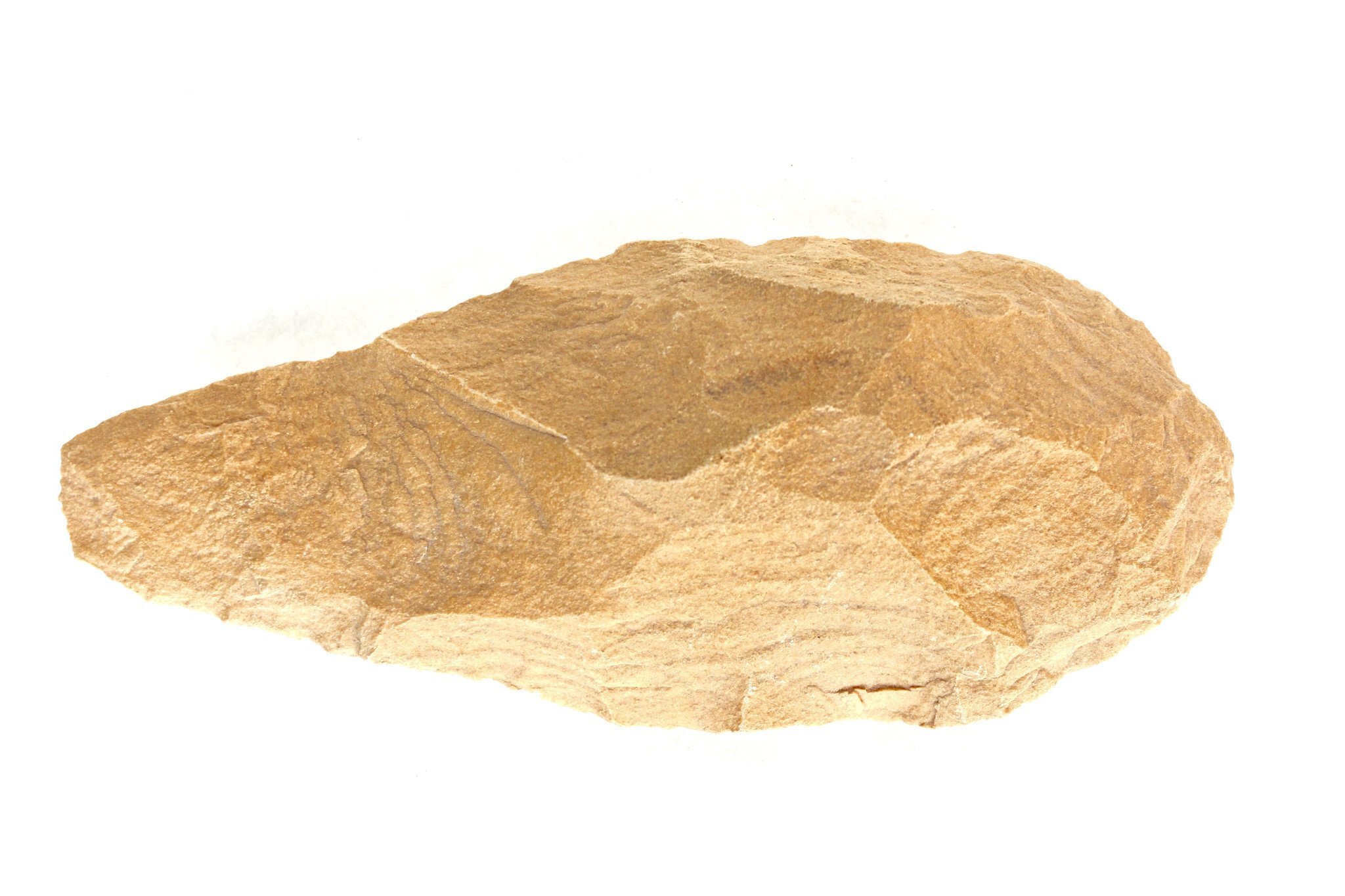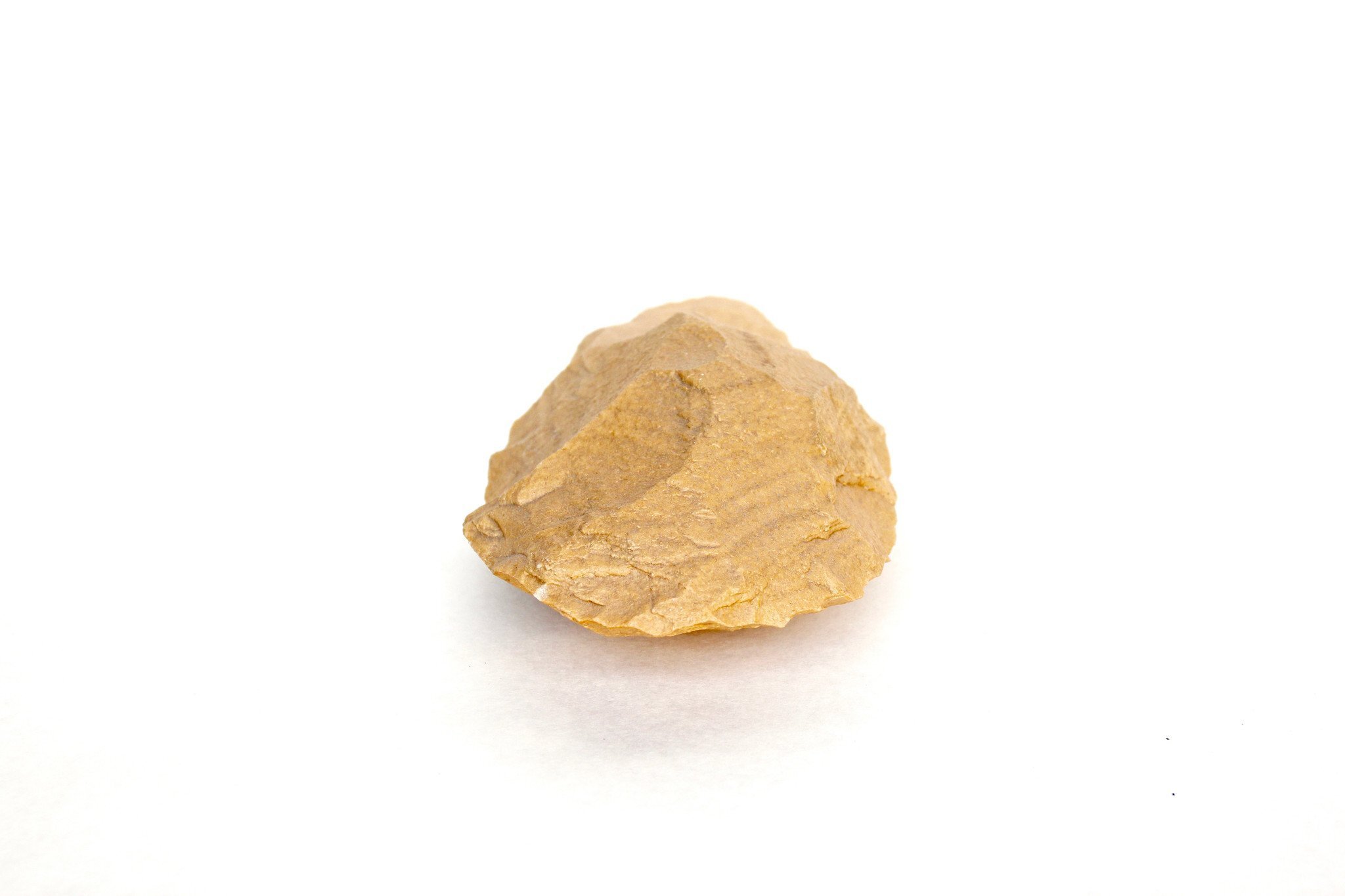 Image 1 of 5
Image 1 of 5

 Image 2 of 5
Image 2 of 5

 Image 3 of 5
Image 3 of 5

 Image 4 of 5
Image 4 of 5

 Image 5 of 5
Image 5 of 5






Extremely Large Lower Paleolithic Handaxe, Sahara
Paleolithic and Lower Paleolithic handaxes and tools are not themselves scarce, dozens of them to be found in early man sites around the world. There are some examples, however, which transcend any recognized utilitarian purpose, have high aesthetic value, and are extremely rare.
From the time of the discovery of the Caves of Lascaux, it was widely stated that here was the beginning of art. It has taken some time, but examination of certain early man tools demonstrate that a refined aesthetic, and the ability to symbolize, occurred hundreds of thousands of years before, preceding even the mastery of fire or speech. Here we have a massive, heavy handaxe from the Western Sahara, larger than almost any of the African and European continent. Compare this with “large” French or English handaxes measuring four to six inches long, or African handaxes of seven or eight inches. There is a silent language implicit in this huge piece, large beyond any known use as a cutting, scraping or butchering tool.
Other axes from the same tradition were exhibited in 2018 in "First Sculpture: Handaxe to Figure Stone” at the Nasher Sculpture Museum in Dallas, the first museum to present ancient handaxes and figure stones as works of art, accompanied by an important catalogue with contributions by Jared Diamond (Guns, Germs & Steel) and others.
Desert wind patina from lying on the Sahara surface for hundreds of thousands of years. Hard stone showing the multiple surface strikes of its creation.
Circa: 1,000,000 BC.
Ex. private collection France.
13 in long x 6 in wide // 33.02 cm x 15.24 cm
On a custom museum stand.
Paleolithic and Lower Paleolithic handaxes and tools are not themselves scarce, dozens of them to be found in early man sites around the world. There are some examples, however, which transcend any recognized utilitarian purpose, have high aesthetic value, and are extremely rare.
From the time of the discovery of the Caves of Lascaux, it was widely stated that here was the beginning of art. It has taken some time, but examination of certain early man tools demonstrate that a refined aesthetic, and the ability to symbolize, occurred hundreds of thousands of years before, preceding even the mastery of fire or speech. Here we have a massive, heavy handaxe from the Western Sahara, larger than almost any of the African and European continent. Compare this with “large” French or English handaxes measuring four to six inches long, or African handaxes of seven or eight inches. There is a silent language implicit in this huge piece, large beyond any known use as a cutting, scraping or butchering tool.
Other axes from the same tradition were exhibited in 2018 in "First Sculpture: Handaxe to Figure Stone” at the Nasher Sculpture Museum in Dallas, the first museum to present ancient handaxes and figure stones as works of art, accompanied by an important catalogue with contributions by Jared Diamond (Guns, Germs & Steel) and others.
Desert wind patina from lying on the Sahara surface for hundreds of thousands of years. Hard stone showing the multiple surface strikes of its creation.
Circa: 1,000,000 BC.
Ex. private collection France.
13 in long x 6 in wide // 33.02 cm x 15.24 cm
On a custom museum stand.

